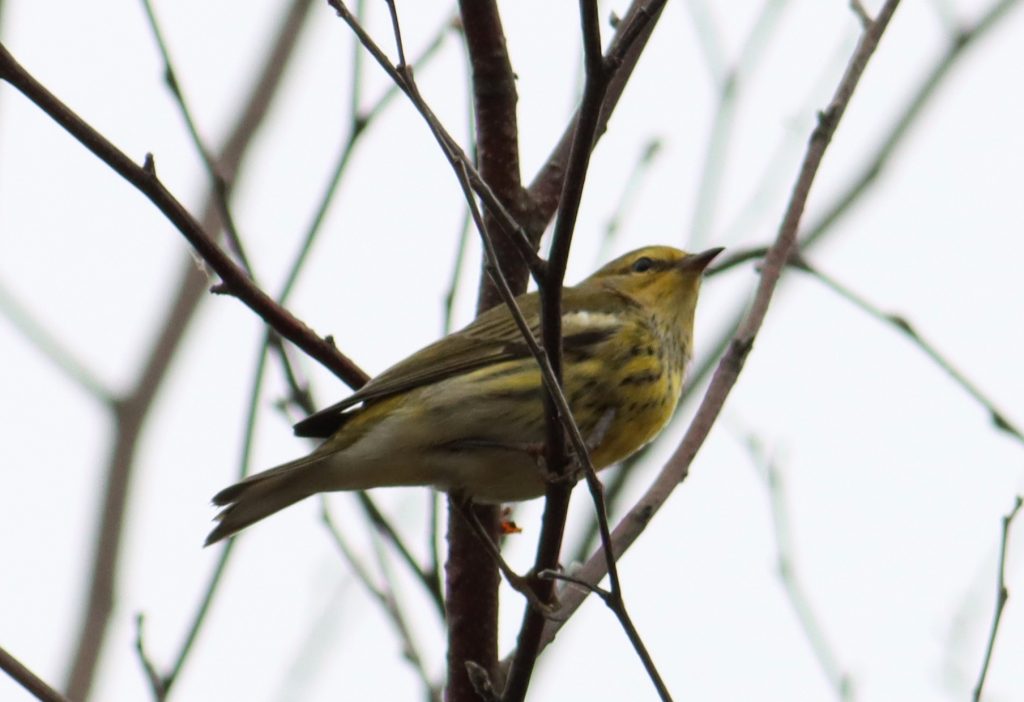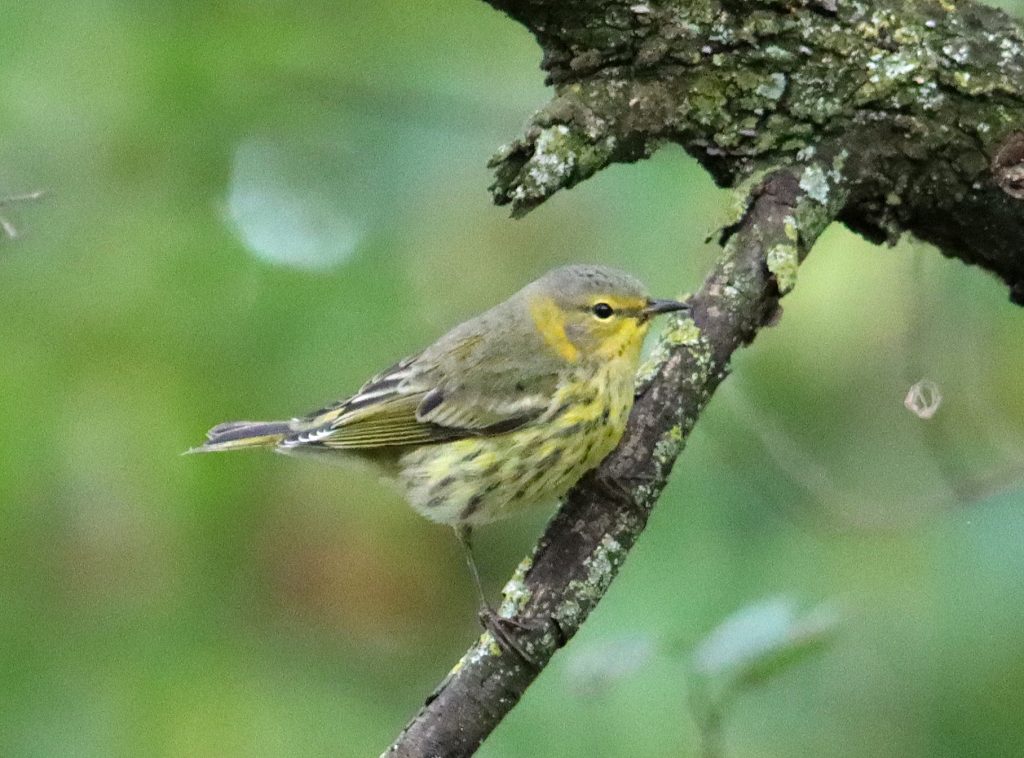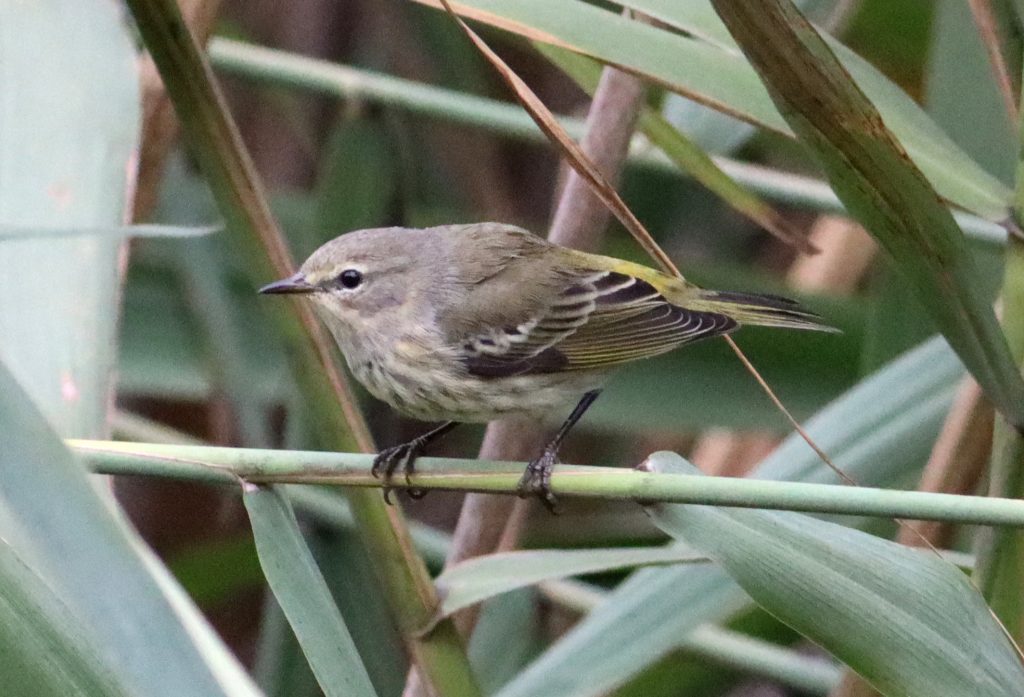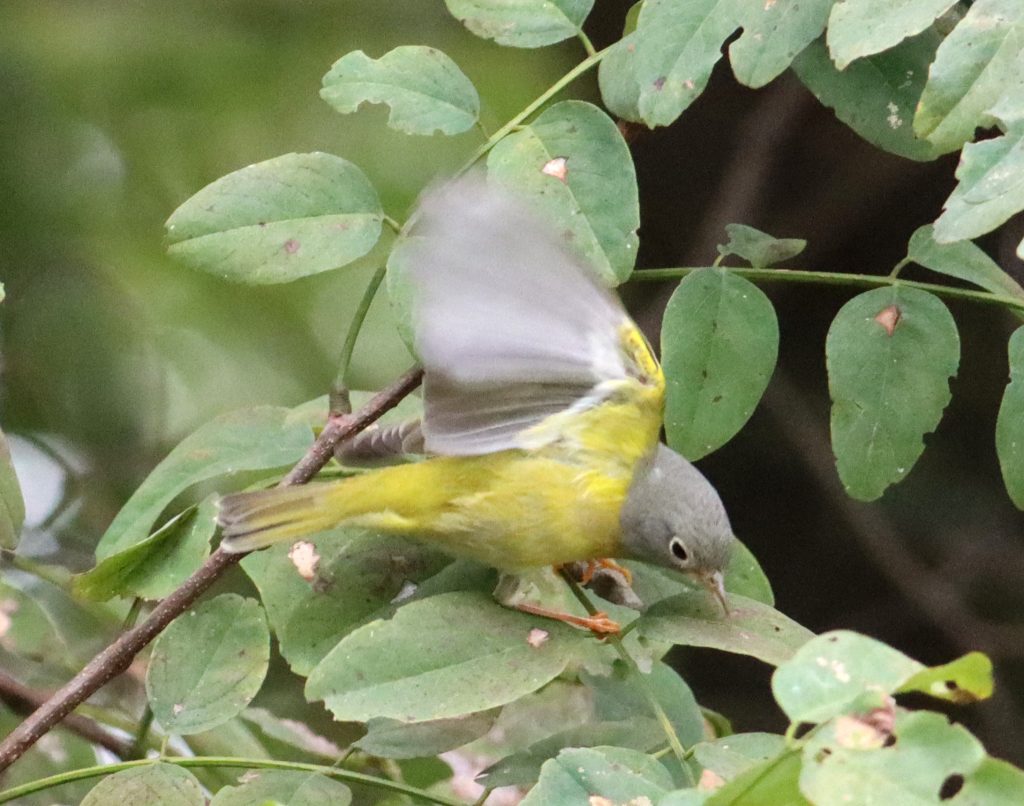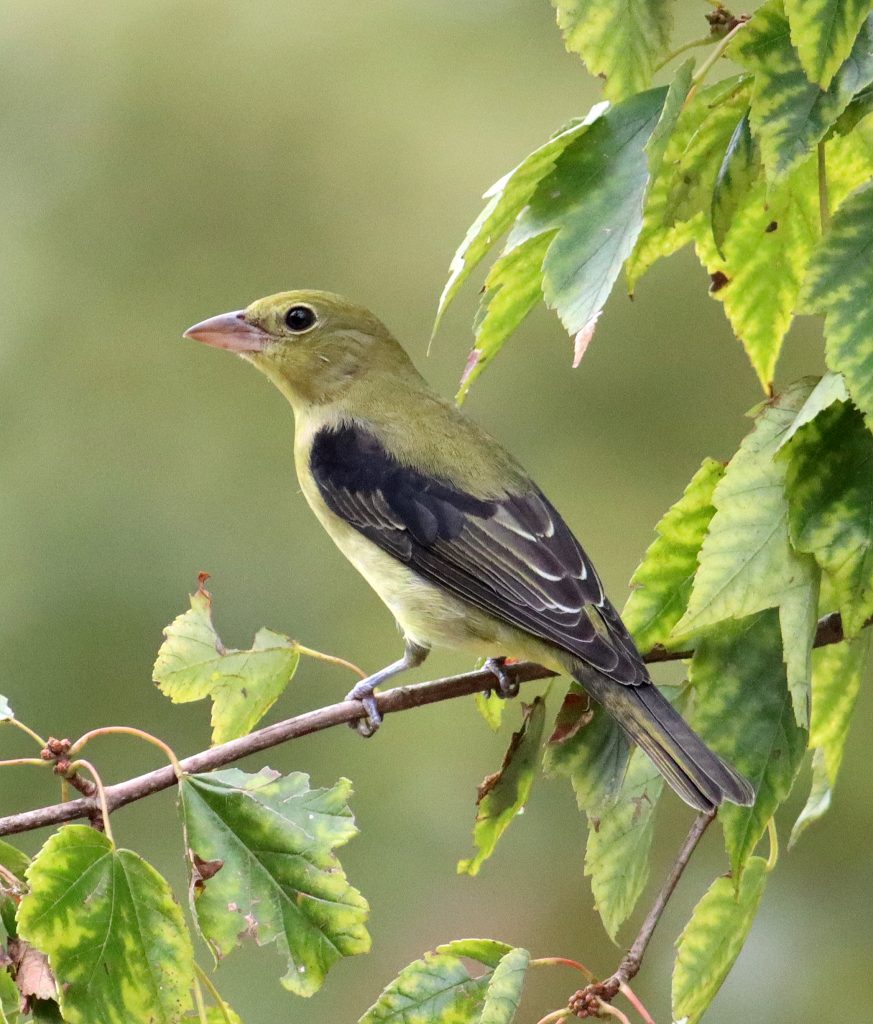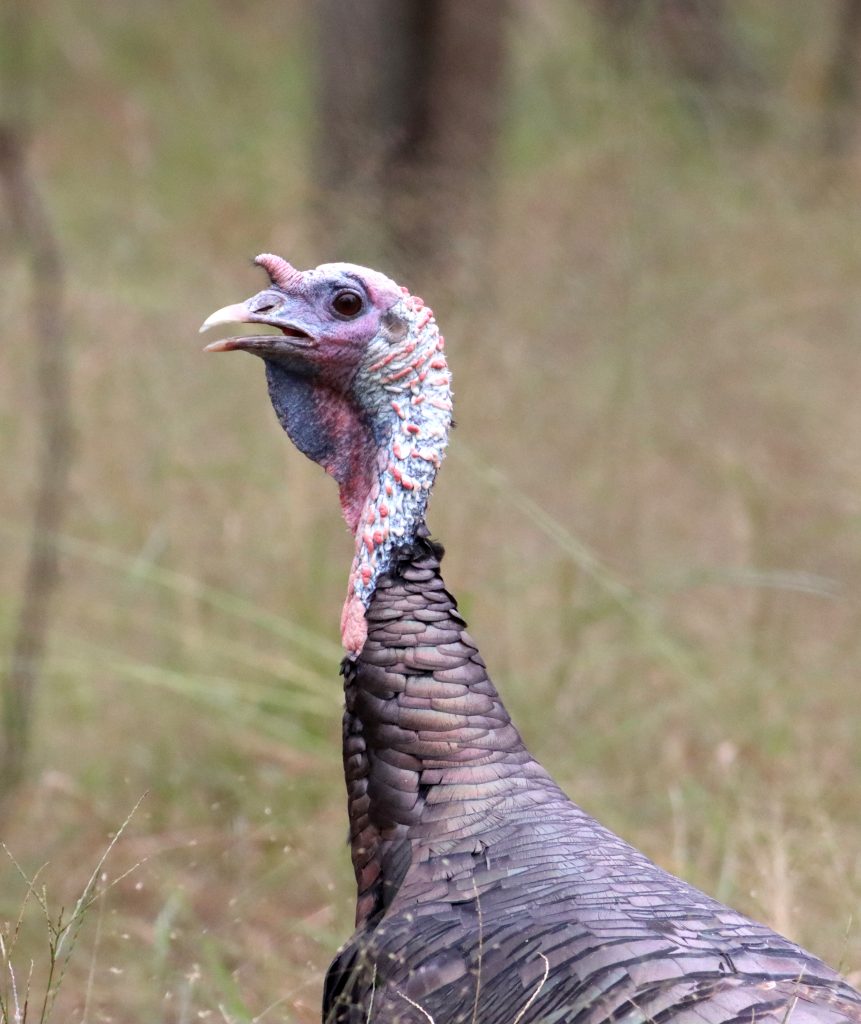It’s been quite a while since I’ve enjoyed one of those marvelous big fall migration warbler days. This week we’ve been having nice weather patterns with northerly or westerly winds that have been bringing those infamous confusing fall warblers and other migrants into our area. So today was ‘one of those days’ where the birds were plentiful and active throughout the day, perfect for brushing up on warbler identification and enjoying them in relatively big numbers.
Jeanine and I headed out to Palmyra Cove Nature Park on the west side of Jersey, a wonderful migrant hotspot. The day started out birdy, much the same as other days this past week. The difference was that on Saturday and Monday, the birds disappeared by around 9AM after getting off to a good start, whereas today the action continued for nine hours until exhaustion set in. I suspect that the overcast day with no winds and moderate temperature of 75 degrees helped keep the activity high.
There were multiple highlights. To start it off, we found our third Connecticut Warbler in the last two outings. Considering that I had only seen two Connecticut Warblers previously in my birding career, it was great to more than double that number within the span of less than a week.
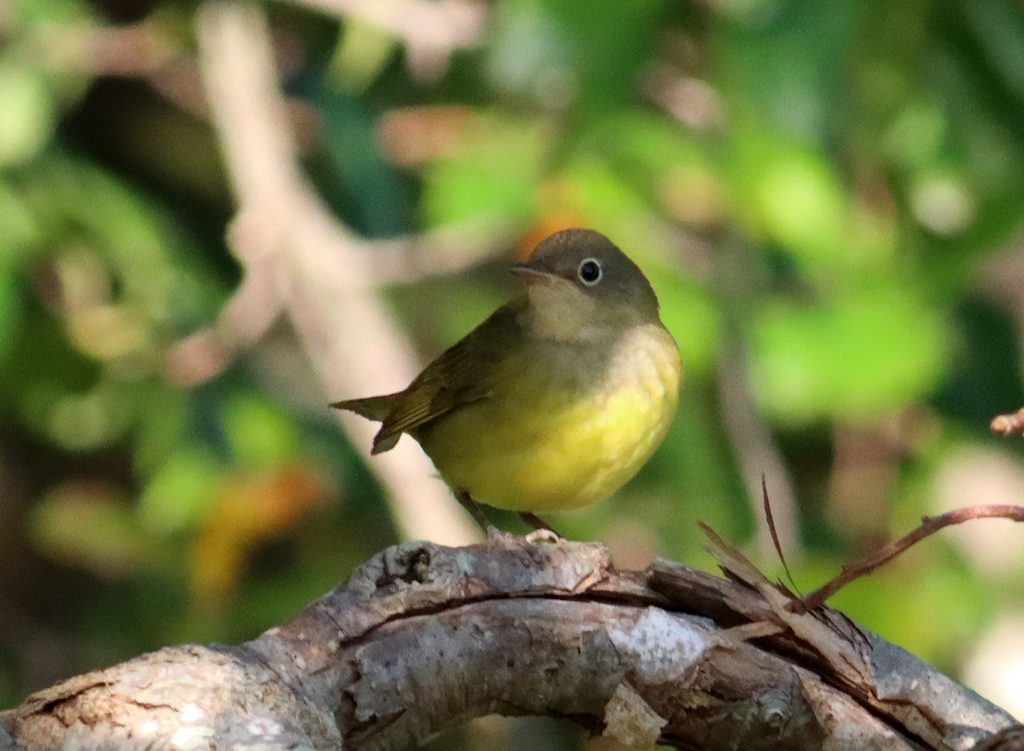
We didn’t take photos of today’s Connecticut Warbler, opting instead to enjoy the bin views before it took off. But here’s one from two days ago. That big wide-eyed look due to the eye ring is a special treat for eastern birders.
The number of Cape May Warblers was outstanding today, especially seeing them in different plumage states. They don’t match the brilliance of their spring colors, but still we saw individuals ranging from ones with strong yellow-orange colors to almost pure dullness. Take a look at the range of what we saw today. I entered 20 Cape Mays in my eBird report, but there undoubtedly were more.

Here’s the rear view of a Cape May Warbler, showing that not all warblers with a yellow rump are Yellow-rumped Warblers.
Tennessee Warbler is a species that usually makes my day if I see just one. Two Tennessees is a super day. Today we estimated seeing at least 15 of them. At one point we saw six of them in one small tree. This was a great opportunity to repeatedly see the fine points of identifying this tough species.

This is a classic fall Tennessee Warbler….mostly greenish-yellow, with no wingbars, having a dark line going through the eye, white undertail coverts, and a short tail. Beautiful.
Another traditionally tough species for me to see is Nashville Warbler. Today I estimated seeing at least six of them. The cool thing was seeing Nashville and Tennessee Warblers in the same tree at least three times today, for a nice geographical duo.
Finally, I don’t often see Scarlet Tanagers in fall. Today we found seven of them, often close or low in the trees.
There were other highlights of species with lower numbers. Here’s a few of them.
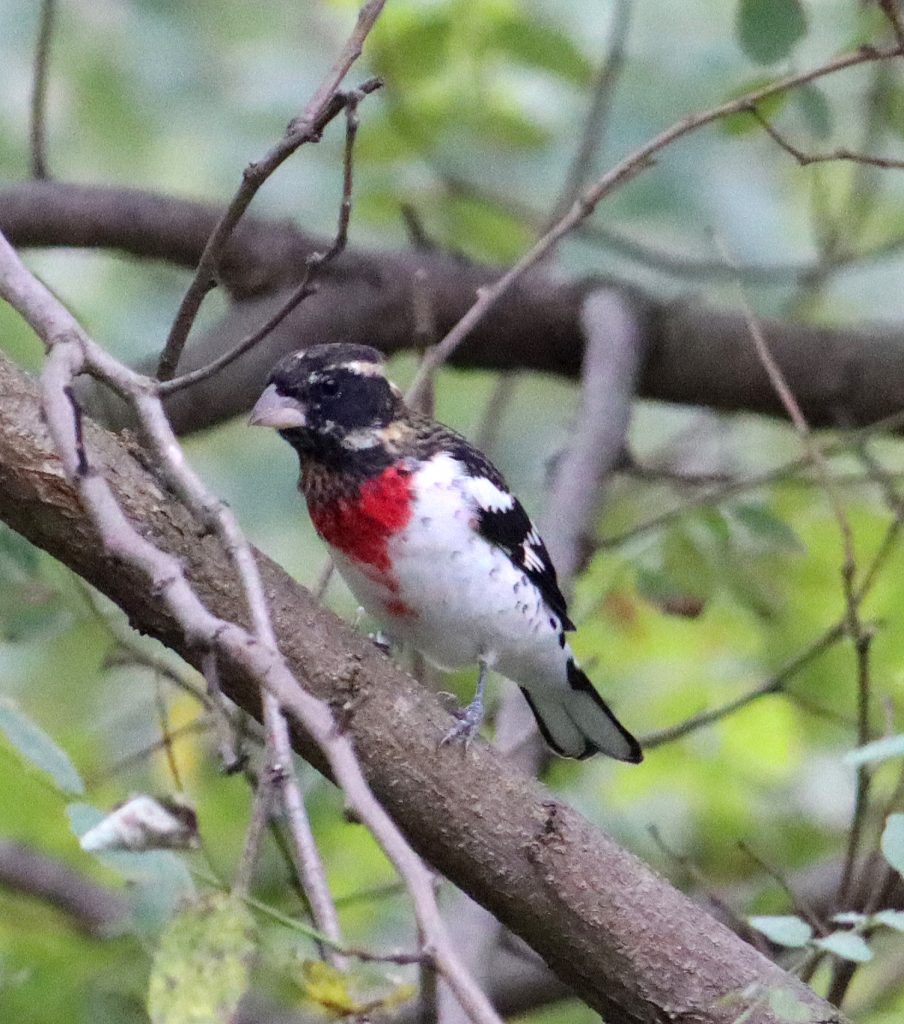
Here’s a male Rose-breasted Grosbeak, transitioning from breeding to non-breeding plumage. I have never seen them in this phase before today.
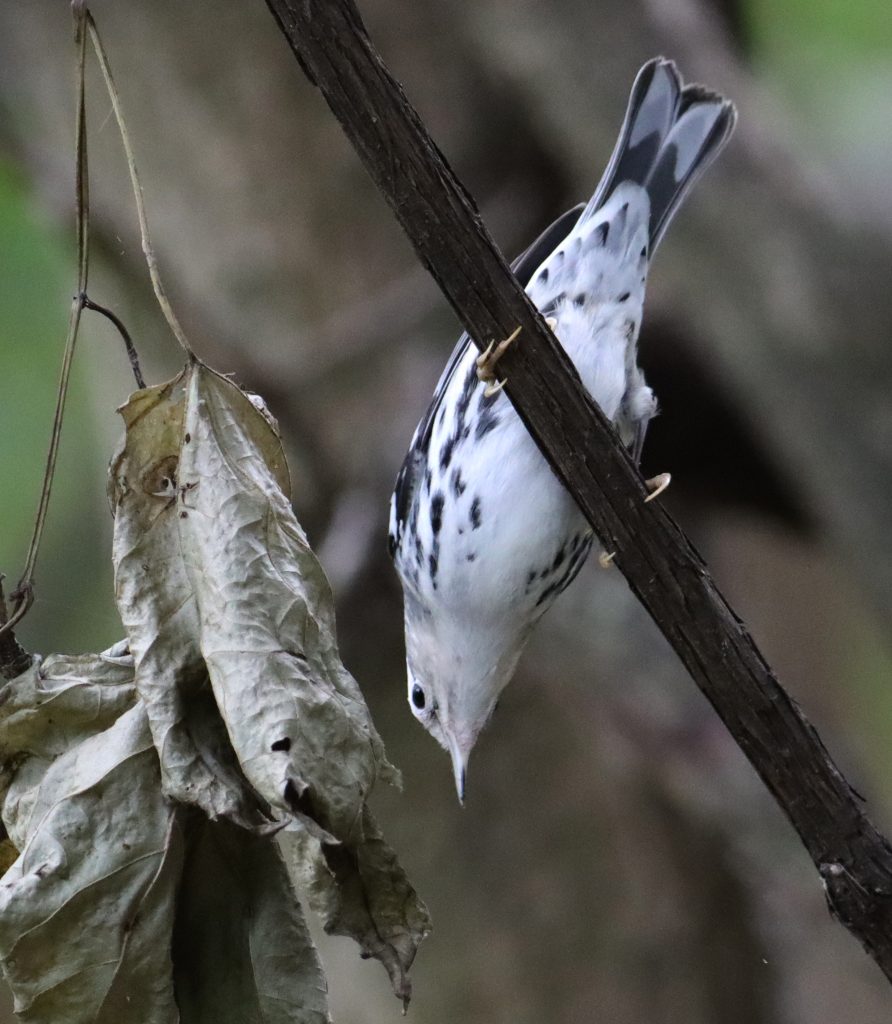
A feeding Black-and-white Warbler. They breed in our area so we are familiar with this little acrobat, but we still appreciate seeing them.
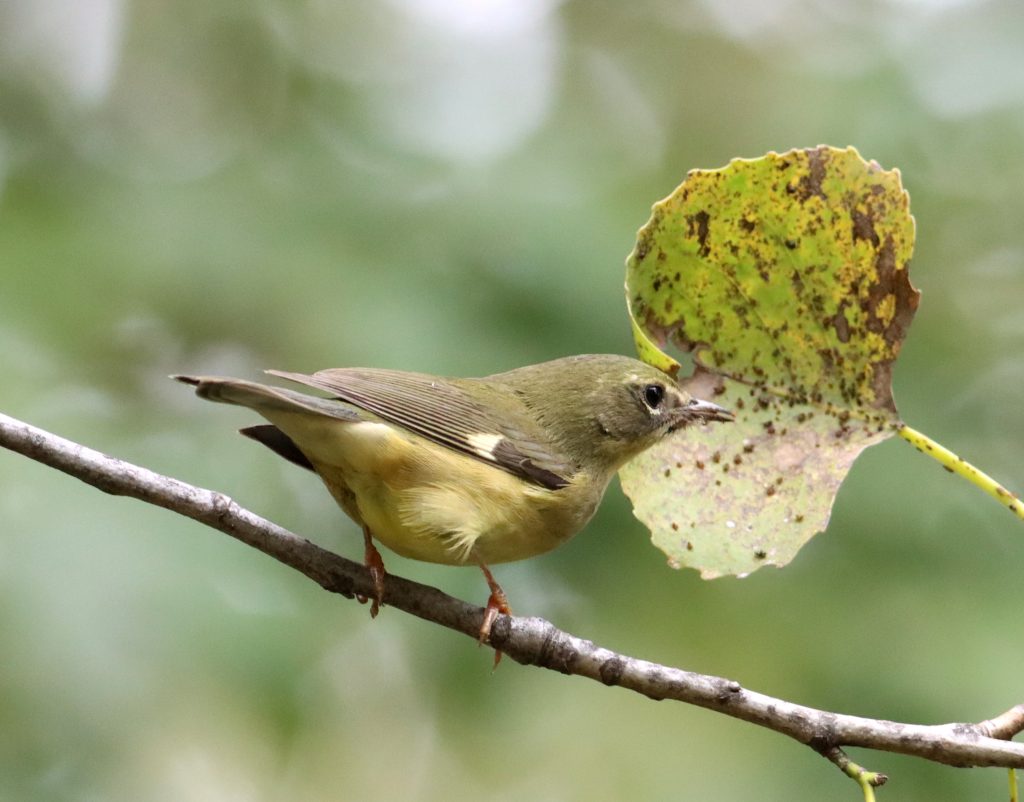
This is a confusing fall warbler that I originally mis-identified. (a good lesson on looking carefully before moving to the next bird) It is a female Black-throated Blue Warbler. The white ‘handkerchief’ is the diagnostic field mark.
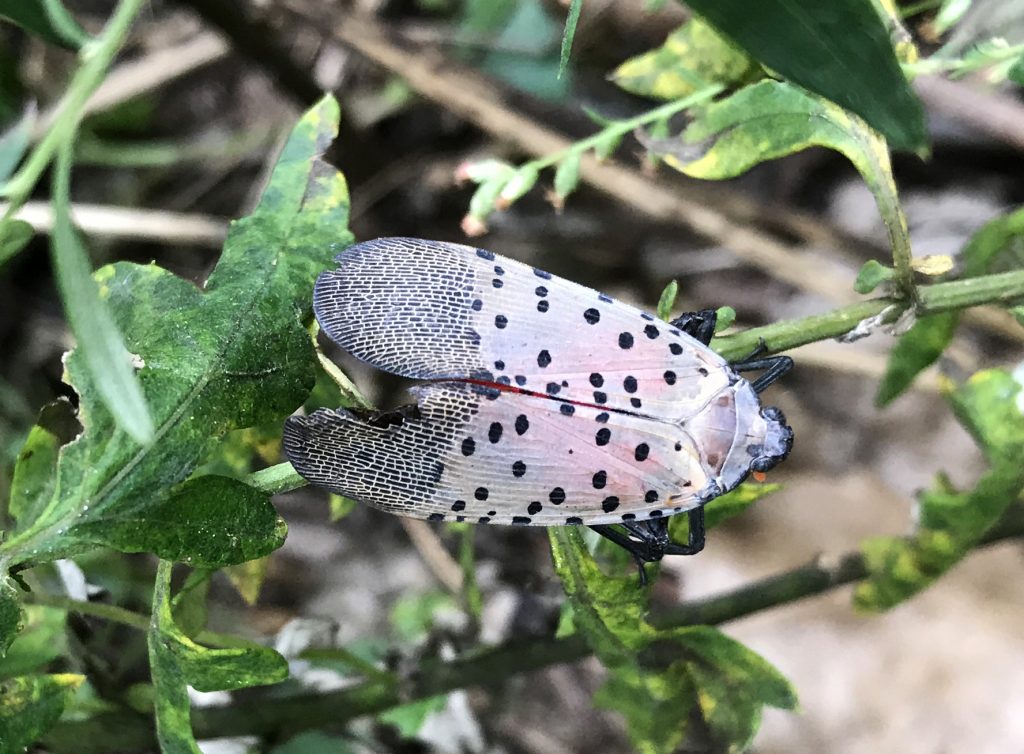
It wasn’t all positive. This is the first Spotted Lanternfly that we have found. It is highly invasive, and was fairly common at Palmyra today. Expect to see much more of them as they spread across the state.
Overall, it was a SUPER day; perhaps the best day of fall birding that I have ever had. I hope you were able to see and study the fall warblers wherever you do your birding.
